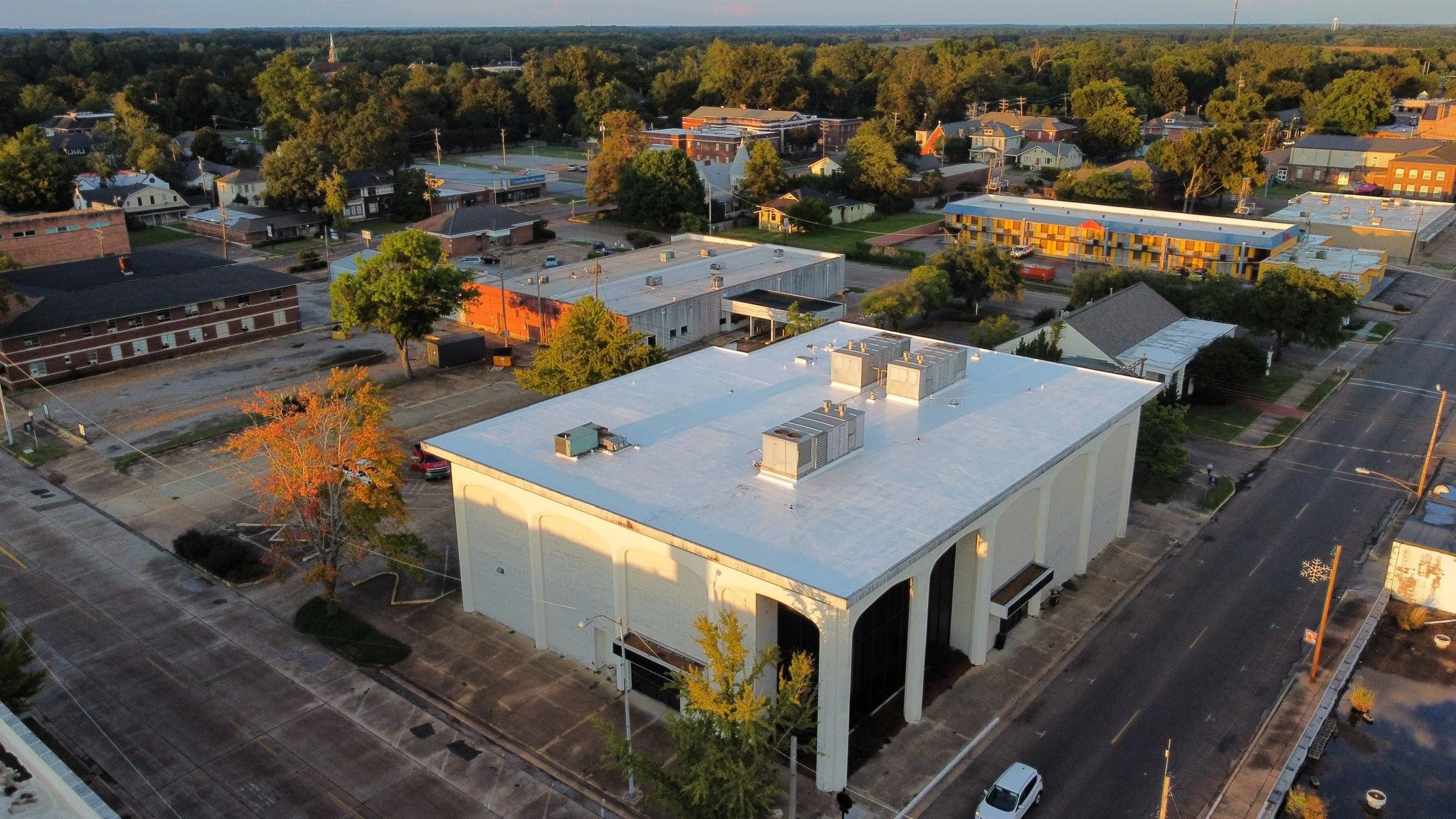
Commercial Roofing 101
Frequently Asked Questions
-
Common flat-roof systems include single-ply membranes (TPO, PVC, EPDM), built-up roofing (BUR), modified bitumen, metal, spray polyurethane foam (SPF), green roofs, and fluid-applied membrane systems. Each offers different strengths in durability, cost, and performance.
-
TPO: 20–30 years
PVC: 30–50 years
EPDM: 20–30 years, sometimes longer
Metal: 40–70 years
BUR and Modified Bitumen: 15–20 years
-
Roof longevity depends on material quality, proper installation, regular maintenance, local climate conditions, ventilation, drainage design, and the condition of the structural deck.
-
Repair is appropriate for isolated issues like leaks or flashing damage. Replacement or restoration is typically needed when there’s widespread deterioration, membrane failure, or the roof is nearing the end of its service life.
-
A fluid-applied roofing system is a multi-layered, seamless waterproof membrane installed directly over the existing roof. It includes a primer, reinforced base layer, and protective topcoat that cures into a flexible, durable barrier. It is a complete system—not just a surface coating.
-
Most fluid-applied systems can be installed in just a few days, depending on roof size and weather. Installation is fast and minimally disruptive compared to full roof tear-offs.
-
Fluid-applied systems offer stronger waterproofing, greater durability, better resistance to ponding water, and longer service life. They create a reinforced, monolithic membrane that adapts to the existing structure and extends roof performance.
-
The reflective topcoat helps reduce heat absorption from sunlight, lowering roof temperatures significantly. This can reduce cooling loads, improve building comfort, and cut energy bills—especially in warm climates.
-
Yes. When applied over a structurally sound roof, a fluid-applied membrane can extend the roof’s service life by 10–20 years without the cost or disruption of a full replacement.
-
They provide seamless waterproofing, energy efficiency, quick installation, reduced landfill waste, compatibility with many roof types, and minimal disruption to building operations.
-
At minimum, flat roofs should be inspected once a year and after any major weather event. Inspections help identify issues like ponding water, membrane wear, flashing separation, or debris accumulation before they become costly problems.
-
Commercial property insurance often covers roof damage caused by storms, hail, or falling debris. Routine wear and tear or lack of maintenance is generally not covered. Keeping detailed inspection records can help with future claims.
-
Cost factors include roof size, slope, system type, number of layers, substrate condition, access logistics, insulation upgrades, and regional labor rates. Restoration options like fluid-applied systems are often more cost-effective than full replacements.
-
A green roof is a vegetative system built over a waterproof membrane. It offers stormwater management, insulation benefits, reduced heat island effect, extended roof life, and ecological value for commercial and institutional buildings.
-
Look for a licensed, insured contractor with commercial roofing experience, manufacturer certifications, detailed proposals, a documented safety record, and clear communication. References and warranty options are also important indicators of reliability.
-
Warranties typically include material coverage from the manufacturer and workmanship coverage from the contractor. Warranty terms can range from 10 years to 30 years or more, depending on the system and provider.
-
Fluid-applied systems are often installed in 2–5 days with minimal disruption. Full tear-off replacements may take several weeks, especially on large or complex roofs, and often require permitting, structural assessments, and more staging.
